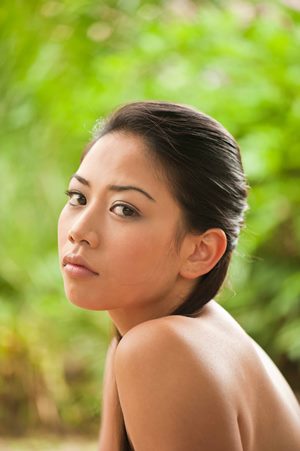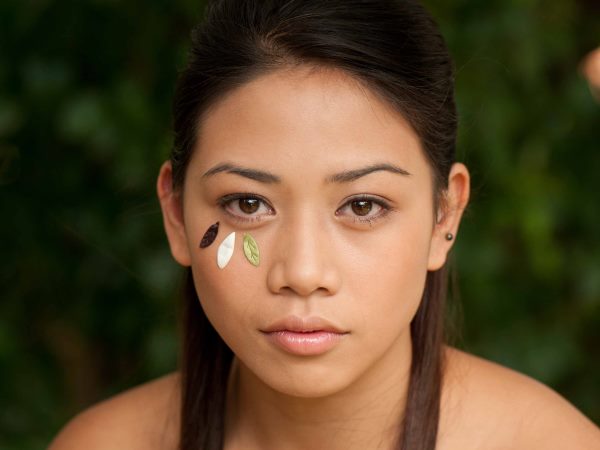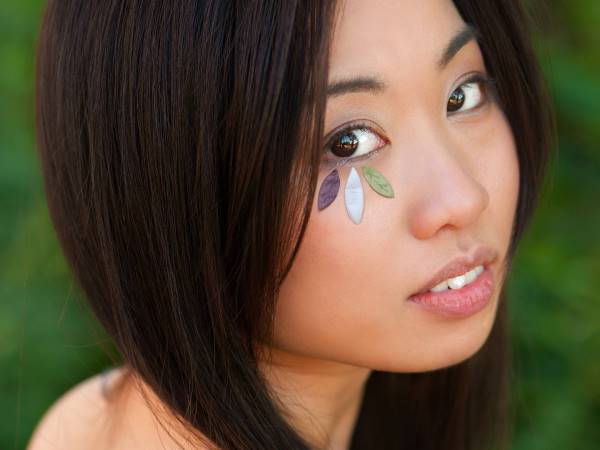Overlooked, and undermined, the Asian skin type is characterised by its pigmentation and concerns different to those of Caucasian skin. It is an area of the beauty industry that calls for our attention, writes Ruby Archis.
In the early 1900s cosmetics innovators coined the terms normal, combination, oily or dry as a categorisation of skin types. In recent years we’ve added sensitive, anti-ageing, natural, organic, cosmeceutical, BB, CC, DD to the marketing jargon but one thing continues to be overlooked: the relevance of new products, skin care and beauty treatments to skin tone.
Ditch the one size fits all approach
Skin is naturally fair, tan, dark, prone to fine lines and wrinkles in some, prone to brown spots, scarring and pigmentation in others. While formulators worldwide are quick to adopt the latest global trends, the fact remains; different skin tones age, pigment, blemish and scar differently. Treating all skin tones with a one-size fits all approach belies their physiological variations and the aesthetic needs of the individual beauty client.
How often have you looked under a Wood’s Lamp and noticed numerous spots otherwise unseen in a flawless Asian complexion? What happens when you mention this to clients of Asian background? Is there surprise or disbelief? Or is there a silent recognition on their part of a skin concern they’re aware of but have been hoping to avoid?
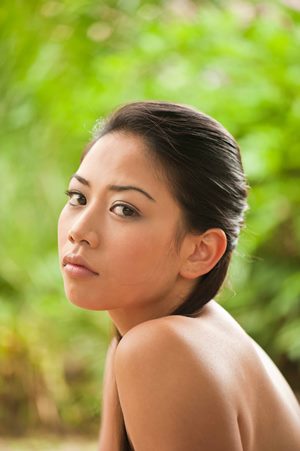 Asian skin and whitening
Asian skin and whitening
History points to the widespread use of skin whitening agents throughout Asia. Traditional Chinese Medicine prescriptions dating as far back as the Eastern Jin Dynasty (AD 317-420), more than 450 recorded concoctions specific to skin whitening and even a coveted seven-herb bleaching formula reserved for royalty dating from 1257; all highlight a beauty concern that makes up the majority of today’s skin care market in Asia.
The common rationale for skin whitening’s popularity in Asia is that porcelain skin is seen as a symbol of beauty and status, a social distinction between the ‘fairer’ aristocracy and the ‘darker’ field workers.
Dermatologists who treat cosmetic concerns typical to Asian skin tones will tell you patients seek bleaching creams to treat the melasma, freckles and lentigenes that are so much more common in Asian skin than Caucasian, and they typically appear as the first signs of ageing amongst the Asian population.
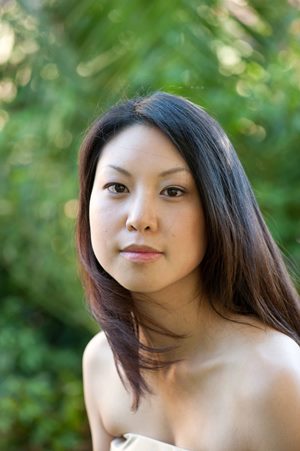 Genetically delayed ageing process
Genetically delayed ageing process
While fine lines and wrinkles are a major focus in Caucasian skin care, the truth is they take quite a while longer to appear in Asian skin where the sudden and rapid appearance of tiny freckles, usually by the mid to late 30s, is a sure sign that the skin ageing process has begun.
According to Gordana Gacic-Vukovljak,cosmetic scientist and head of Research and Development at 9Tribes Skincare, 95% of skin’s visible ageing amongst all skin types is caused by sun exposure.
“Across all skin tones, sun exposure is the primary cause of photodamage resulting in loss of skin structure and elasticity and an increase in uneven brown or age spots.”
“However, in Asian skin tones photoageing in terms of localised hyperpigmentation is much more common than in Caucasian skin tones and occurs with greater incidence than skin wrinkling,” she said.
Falling into Fitzpatrick skin classification types III to V, Asian skins harbour higher levels of melanin which contribute to their general photoprotection and delayed onset in developing fine lines and wrinkles, but also to their propensity for increased pigmentation issues.
Skin tone in general is determined by the amount of melanin and its distribution within skin layers. It is important to note the number of melanocytes – melanin-producing cells – are equal amongst all skin tones and that differences in colour and tanning ability actually arise from the number and aggregation of melanosomes, or melanin carrying cells.
In Asian and darker skin tones there are greater numbers of melanosomes, which also tend to be distributed throughout the epidermis from the stratum basale to the stratum corneum. This contrasts with Caucasian skin tones where melanosomes are primarily found in the stratum basale. In both Asian and Caucasian skin, melanosomes tend to be smaller and grouped in aggregates (some studies suggest aggregates are more compact in Asian skin tones) in contrast to the individual, larger melanosomes typical of African skin tones.4
Asian skin concerns
As a result of higher melanin levels in Asian skin, pigmentation issues such as sun-induced melasma, post-inflammatory hyperpigmentation (PIH) and acne-induced hyperpigmentation are primary skincare concerns presented at salons and dermatology clinics as they can take several months to fade or go away, if at all.
It is also common to see increased sensitivity amongst clients of Asian background. In particular the skin barrier, which comprises the entire stratum corneum, has been shown to have the weakest barrier function in terms of external influences.
“While water content is reported to be higher and trans-epidermal water loss (TEWL) has been shown to be lower in Asian skin, the stratum corneum has been shown to be thinner and the lipid barrier to break down more easily,” Gordana said.
Prone to eczema
Known as mechanical stress, the actual application of soaps, creams or perfumes can lead to barrier break down causing irritation, redness or stinging. A recent Melbourne study on eczema (which results from a weaker skin barrier) also found a higher incidence of the condition amongst Asian babies compared to Caucasian, and many cosmetic dermatology articles are now reviewing the heightened sensitivities and irritations seen across the Asian continent, particularly in Japan.
In contrast, research has shown there is higher distribution of sebaceous glands and collagen content in Asian skin tone along with increased dermal thickness and this may contribute to both the later onset of fine lines and wrinkles and also to the higher natural oiliness often seen in clients of Asian descent.
What does it mean for you?
So what does all this mean and how does it affect beauty regimens or treatments for Asian clients in your skin clinic or salon?
Product characteristics in Asia
Firstly, if we look at product formulation across Asia, it tends to be light andnon-oily with good spreadability and quick absorbency. Despite the use of heavier products in colder, harsher parts of Asia, skincare products are typically more lotion-like compared to those used in Australia, comprise quite potent skin whitening ingredients counterbalanced by SPF (SPF is generally not as high as in Australia) and, despite the trend to ‘natural’ products, continue to incorporate silicones which assist with product slip and spread.
While there is a trend to ‘copy’ well-known European brands, formulators prefer to use traditional Asian plant extracts for anti-ageing and fragrances are used in very small amounts or not at all (light ‘floral’ fragrances are preferred when fragrance is used). Toners are replaced by serum-like softeners and in countries like Japan a six or seven step cleansing, tightening and skin priming routine is common even before the application of makeup. Overall however, skin whitening and blemish control remains the primary focus in Asian skin care.
What Asian customers prefer
When offering beauty treatments to clients of Asian background take both skin tone requirements and cultural preferences into account. Lighter products with lower fragrances will be preferred aesthetically. Use serums, moisturisers and masks with increased skin barrier repair complex to reduce sensitivities and maintain barrier function and use pigmentation controlling products, whitening treatments and chemical peels that have been proven to work specifically on Asian skin tones (not just Caucasian).
When considering lasers, a Wood’s light examination prior to laser or light therapy is always recommended. Q-switched lasers carry the highest risk of PIH in Asian skin tones whereas fractional skin resurfacing and laser technology that prevents damaging epidermal melanin is safest to use without the risk of further hyperpigmentation or hypopigmentation.
Above all, knowledge of the differences and similarities and understanding the needs and benefits of all skin tones will allow you to tailor treatments to your clients to provide an insightful, personalised and unique beauty experience.
Contributed by Ruby Archis, 9Tribes Skincare, www.9Tribes.com

